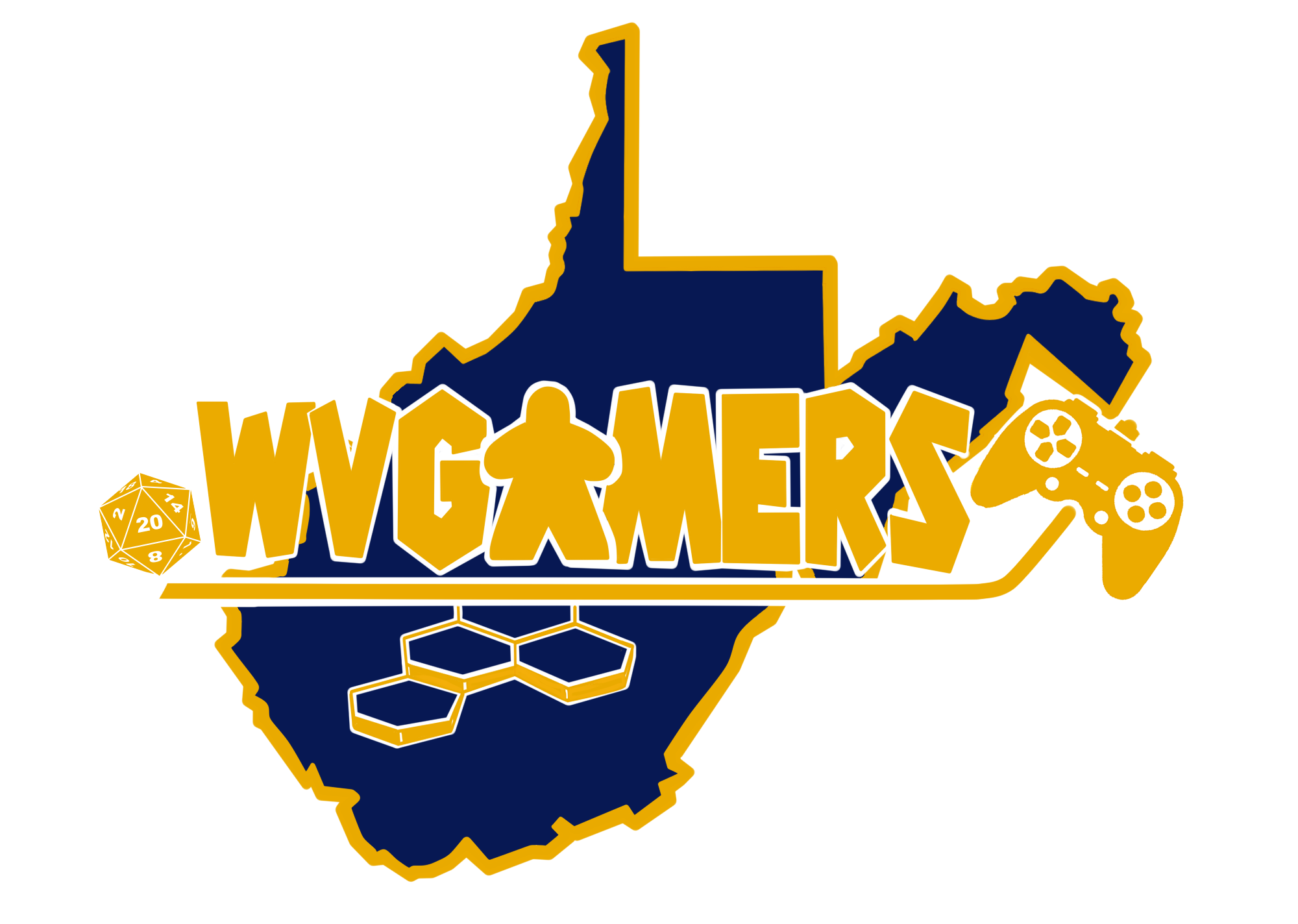In this game, you win if you make it home. To make it home, you must survive. To survive, your komrades must die!
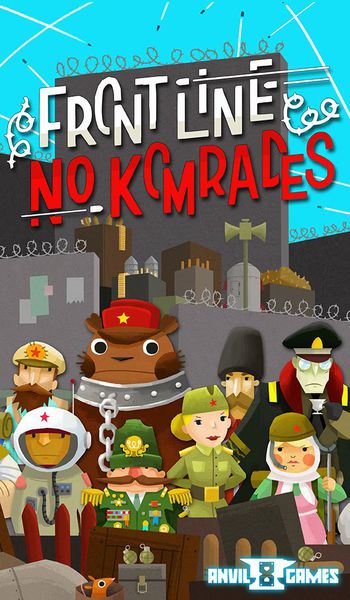
| Front Line No Komrades (2016) | |||||
| Designer(s) | Will Conway | Artist(s) | Kwanchai Moriya | Publisher |
Anvil Eight Games |
| 2-10 | 8+ | 20-40m | |||
You all have your reasons for being on the front line, but now that you are there, all you want to do is go home. However, the evil Kommissar won't let you leave until there is only one survivor. You will have to betray your komrades and ensure they are the ones that fall to the incoming attacks.
In this card game, you are in a line on the front lines of a warzone. Each turn, you and the other komrades receive intell about where the next attack will strike; you have one turn to play cards to alter the line or change the target to ensure you survive while your komrades fall. The game is very easy to learn, has adorable artwork, and is a great quick game.
Box and Components
This is strictly a card game so all of the components are cards in a small box. The majority of the unique art is on the 10 character cards, incoming attack cards, and equipment cards. The characters are drawn in a cute, simple style that is perfect for this game; in the many demos I have done, the artwork is what has drawn people in and allowed enough time to hook them with the straight forward game mechanics. The cards are easy to read and only require a little knowledge of the symbols to be able to jump into the game.
Tracking health is very simple with the character card with numbers listed and the card with the characters special ability; you will play the character ability card on top of the number card and simply slide it to show your current health. Other games such as Star Realms use a similar health tracking method and keeps the cost low avoiding needing special health tokens.
The only negative thing I can say is the card box needs a small divider to help keep the cards in order. There are two stacks of cards that are placed in the box side by side, and when the box is flipped around (like in a bag), the cards shift and mix together. A little card stock divider fixes this, or you can 3d print a simple divider, if you want to be fancy.
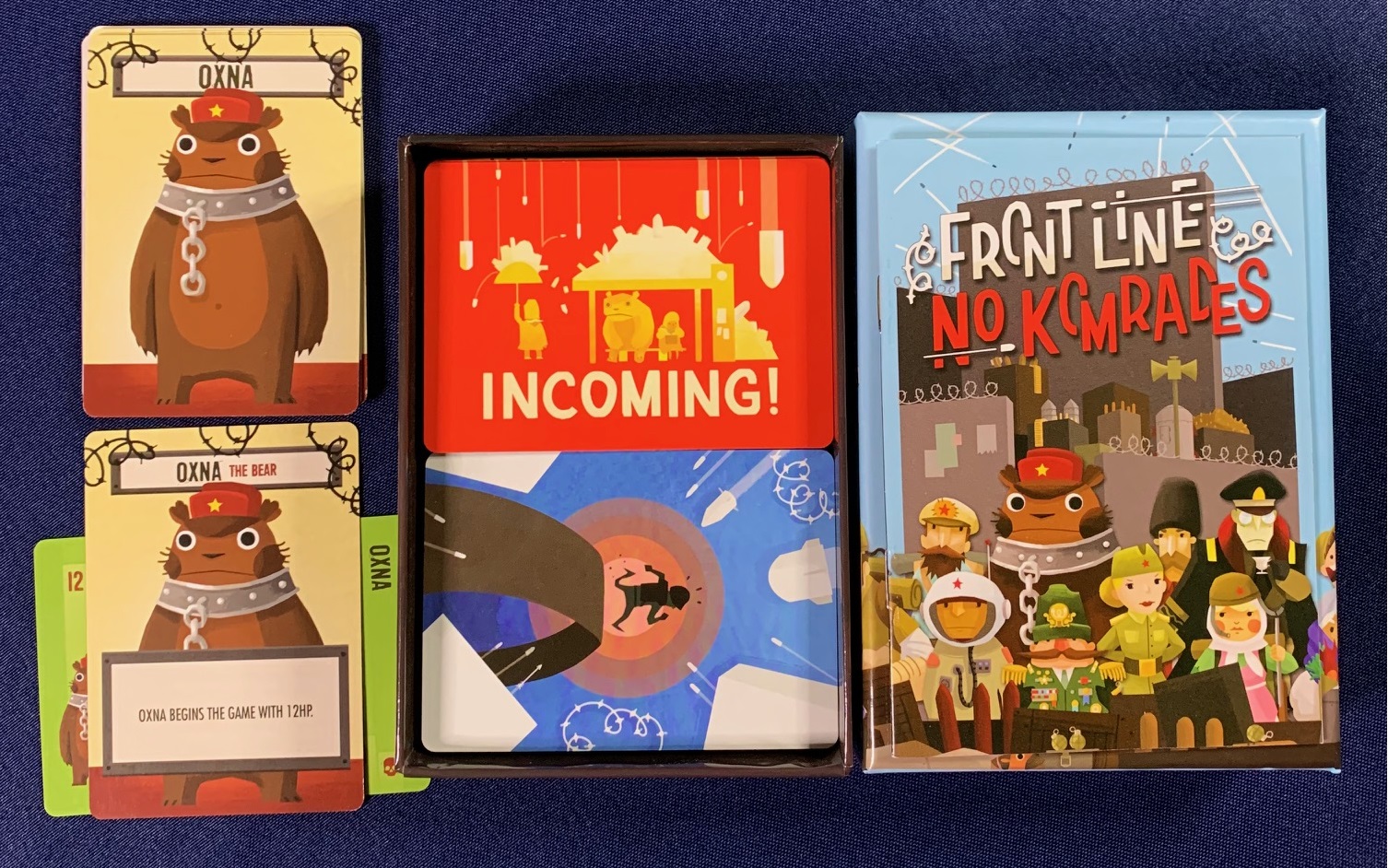
Mechanics
The game is pretty simple to learn. The players start off the game with a hand of five actions cards that will be used to allow them to avoid taking damage or ensure their komrades take the brunt of it at least. The players will have a health track card, a character card with their ability, and a character card with just the graphic of the character. The plain character card will be placed in the middle of the table, and all these character cards will be shuffled and placed in a line. At the front of the line, the deck of Incoming! cards will shuffled and place face down. The back of the line will have the Kommissar; the Kommissar is always at the back of the line and will not allow players to pass. There will be a single blank space in the line; the blank space is used as a potential target for incoming attacks and makes it possible for attacks to miss the players.
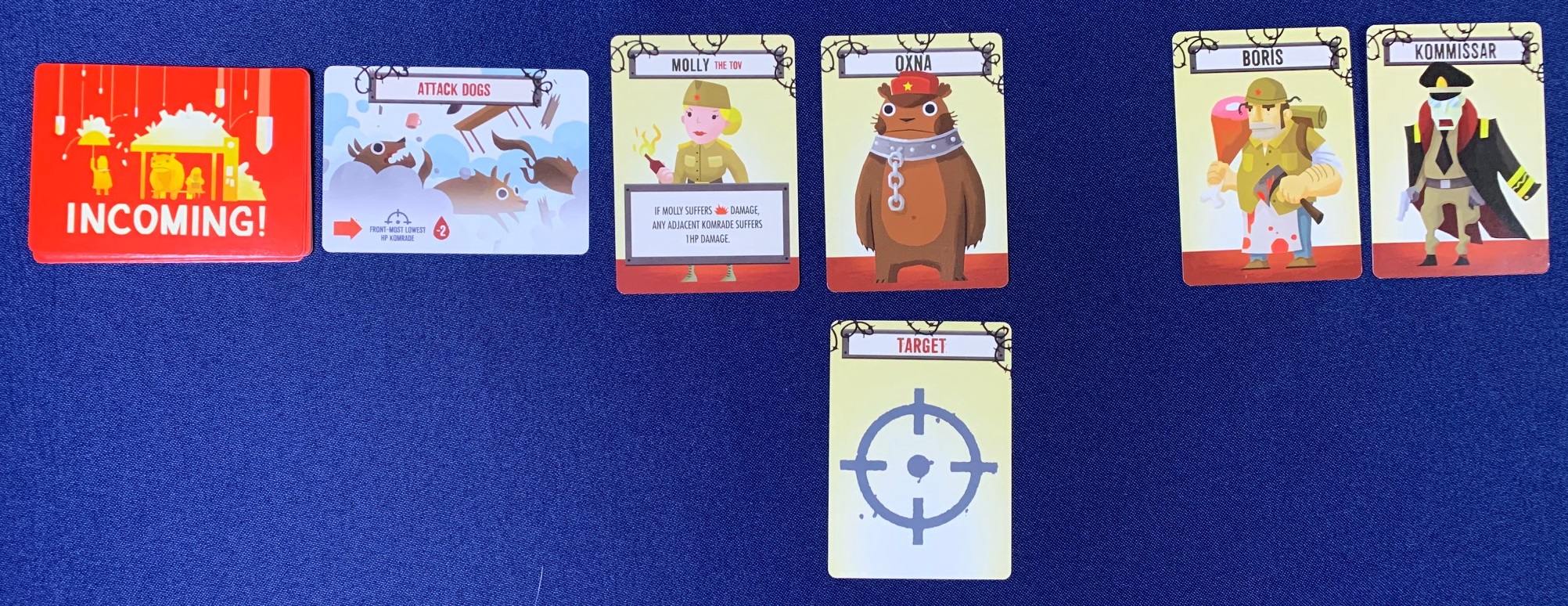
Turn Order
1. An Incoming! attack card is drawn, and the target card(s) are set where the attacks are expected to hit.
2. Each player selects a card to play face down from their hand. From this point until just before the Incoming! attack is resolved, players may be play one of their Event Cards face up as a free action, in addition to their played face down card.
3. Starting with the player with the initiative card and going clockwise around the table, players reveal and perform their actions. Details for how each action card is used is shown below.
4. Resolve the effects of the Incoming! card and adjust the health of the Komrades as necessary. If Komrades hit 0 health, they are out of the game, and their komrade is removed from the line shifting the line to remove the space they left behind.
5. Each player draws back up to 5 cards, and the initiative card is handed to the next player clockwise.
This continues until one (or zero) players remain.
Incoming! Cards
There are a variety of Incoming Cards that allow for a lot of replayability each game. The cards are pretty simple to read once you understand the icons.
The first symbol in the lower left will either be an splash, fist, or an arrow (left or right) symbol. These each represent a damage type and impact how komrades can avoid certain attacks and how the attacks will deal damage.
- Splash - Targets a space and deals damage to that space and the 2 adjacent spaces.
- Linear (arrow) - The attack comes in where the target is and goes through the line in the direction of the arrow until a komrade has been hit.
- Special (fist) - Follow unique rules based on the text of the incoming card.
The second icon on most cards is a target that will tell you where in the line to place the Target(s) cards; it could be the Open, First, Last, Even, Odd, or some unique space.
The third symbol (blood drops) represents how much damage is dealt, which could be multiple spaces of damage such as explosions dealing the most damage to the Target space and lesser damage to the adjacent spaces.
Lastly, there may be some special text to describe how unique cards will work.

Action Cards
There are three types of actions cards the players may have in their hand.

Maneuver Cards
Maneuver cards are the cards that typically allow you to manipulate the order of the line in someway. There are a few terms you will need to be familiar with before starting, but once you know those, the cards are pretty self-explanatory. They not only impact your character, but they could target other players or even change the target of the incoming attack.
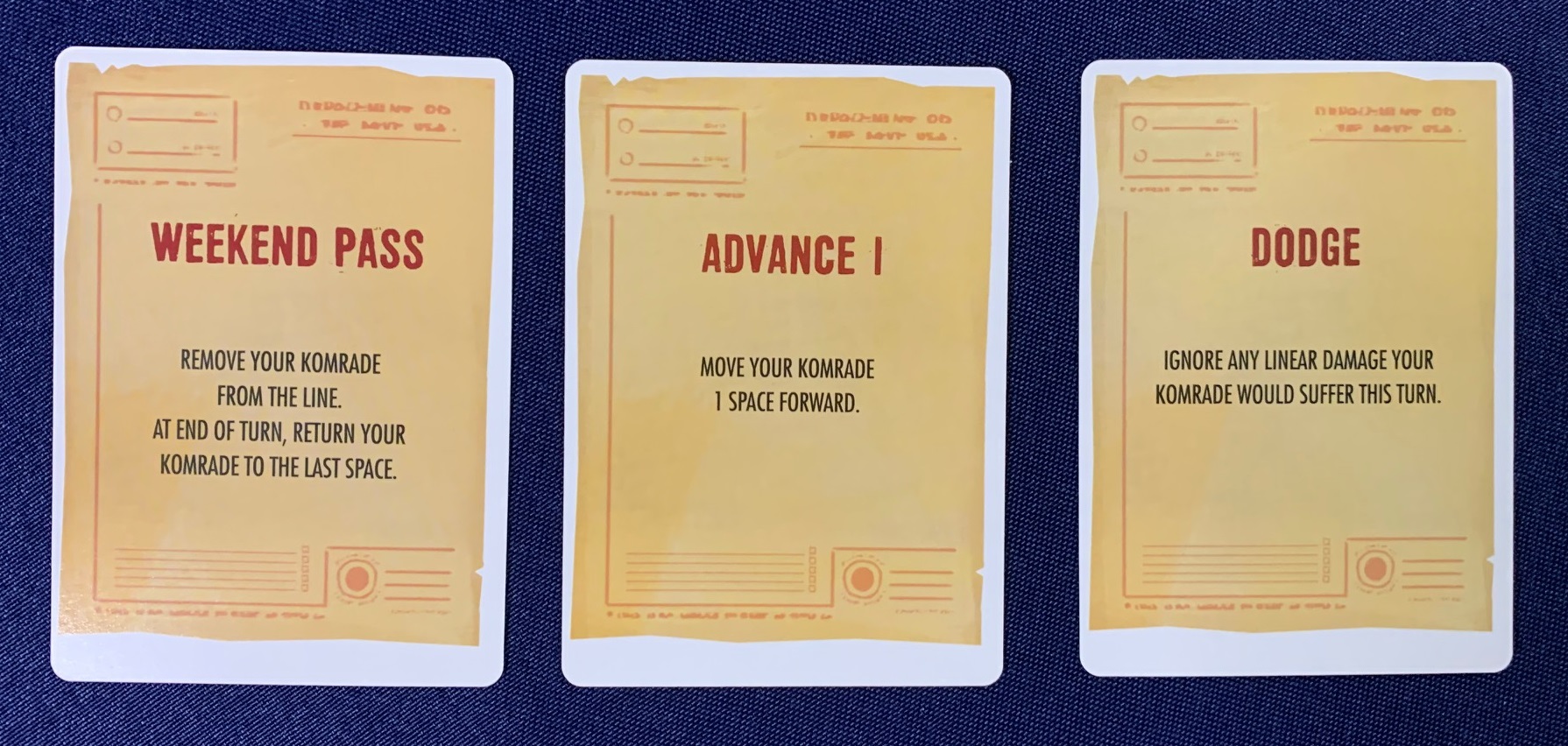
Equipment Cards
Equipment cards provide a benefit such as temporarily health, healing, and ability to negate certain types of attacks. The equipment cards will remain in front of the player until the benefit is used.
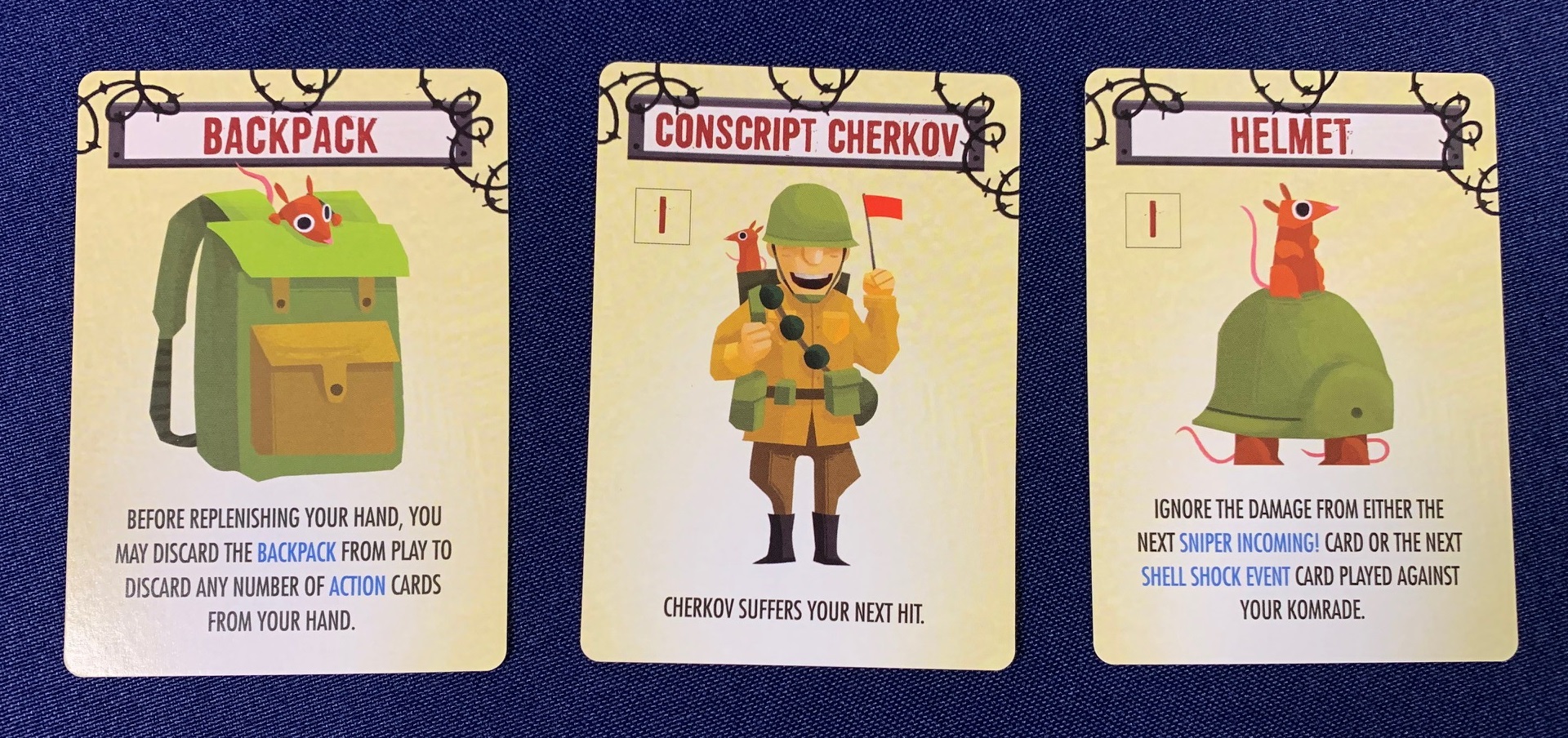
Event Cards
Event cards provide a way to impact the round in unique ways out of turn. You can either use the event cards during the normal card phase to take no action or at any point during the turn to use its benefit (only one event card can be used in this way per player per turn).

Expansions
There are currently two expansions for the game, which add in additional characters, incoming cards, and a variety of new action cards to change things up between these 54 card expansion packs. They also introduce a new way to play with Scenarios. Scenarios allow for unique competitive games as well as a few cooperative missions putting the players against the Kommissar. The two expansion together almost double the size of the game allowing for a lot of variety.
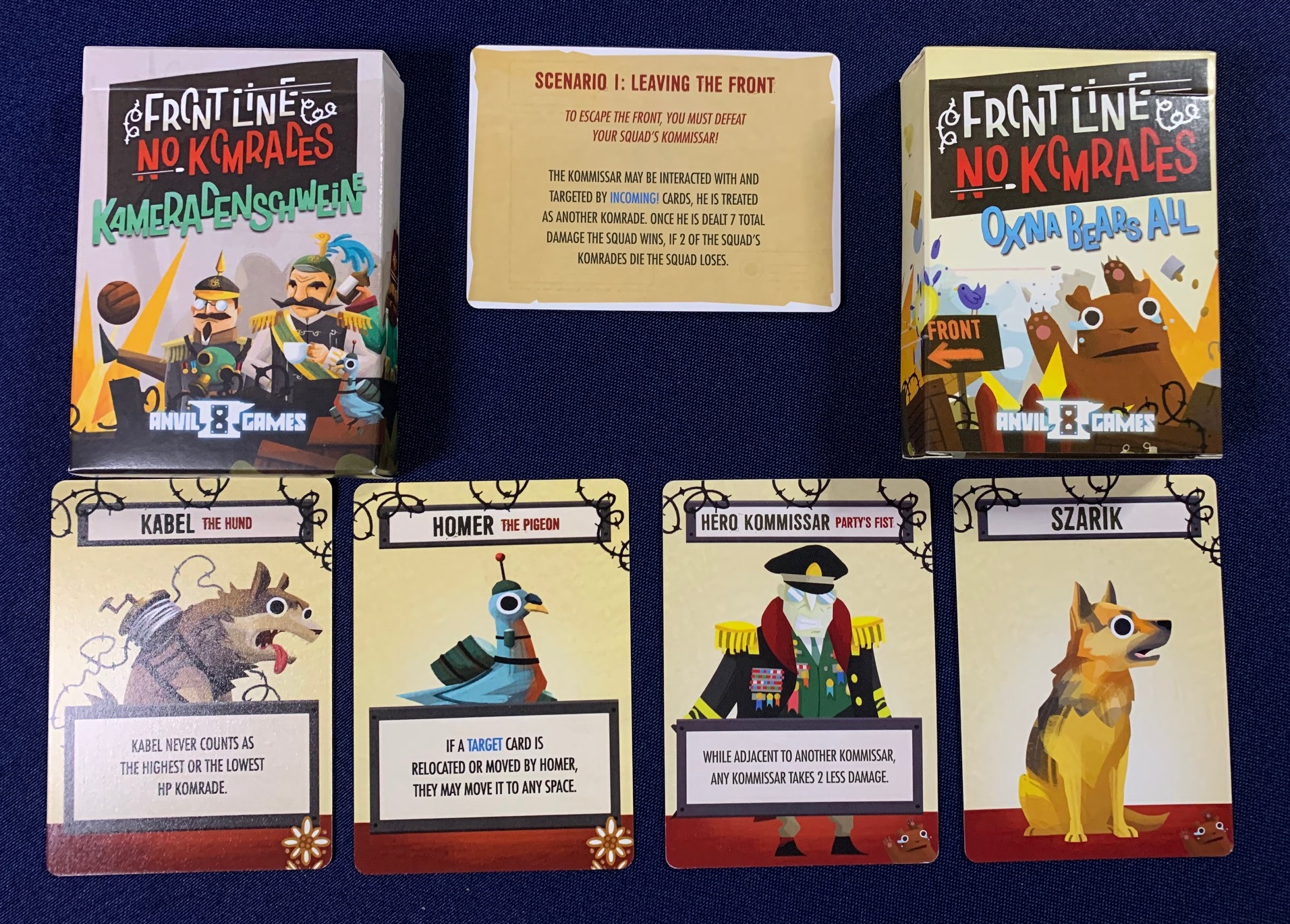
Final Thoughts
I love this game; it is simple and so easy to teach people. It is very cut throat, which people have really enjoyed. I was fortunate enough to work the Anvil Eight Games booth at Origins 2019 and PAX Unplugged 2019, and I ran probably 150-200 demos between the two events. It was a very popular title that nearly sold out at both events. People really enjoyed the artwork, portability, and easy to learn mechanics of the game. Despite running it so many times, I still love this game, and I have personally bought a few copies for friends as gifts.
The game is also pretty well balanced in terms of time and player count thanks to some recommended starting augmentations for the game. If you like fun quick games you can play with just about anyone, I highly recommend this game.
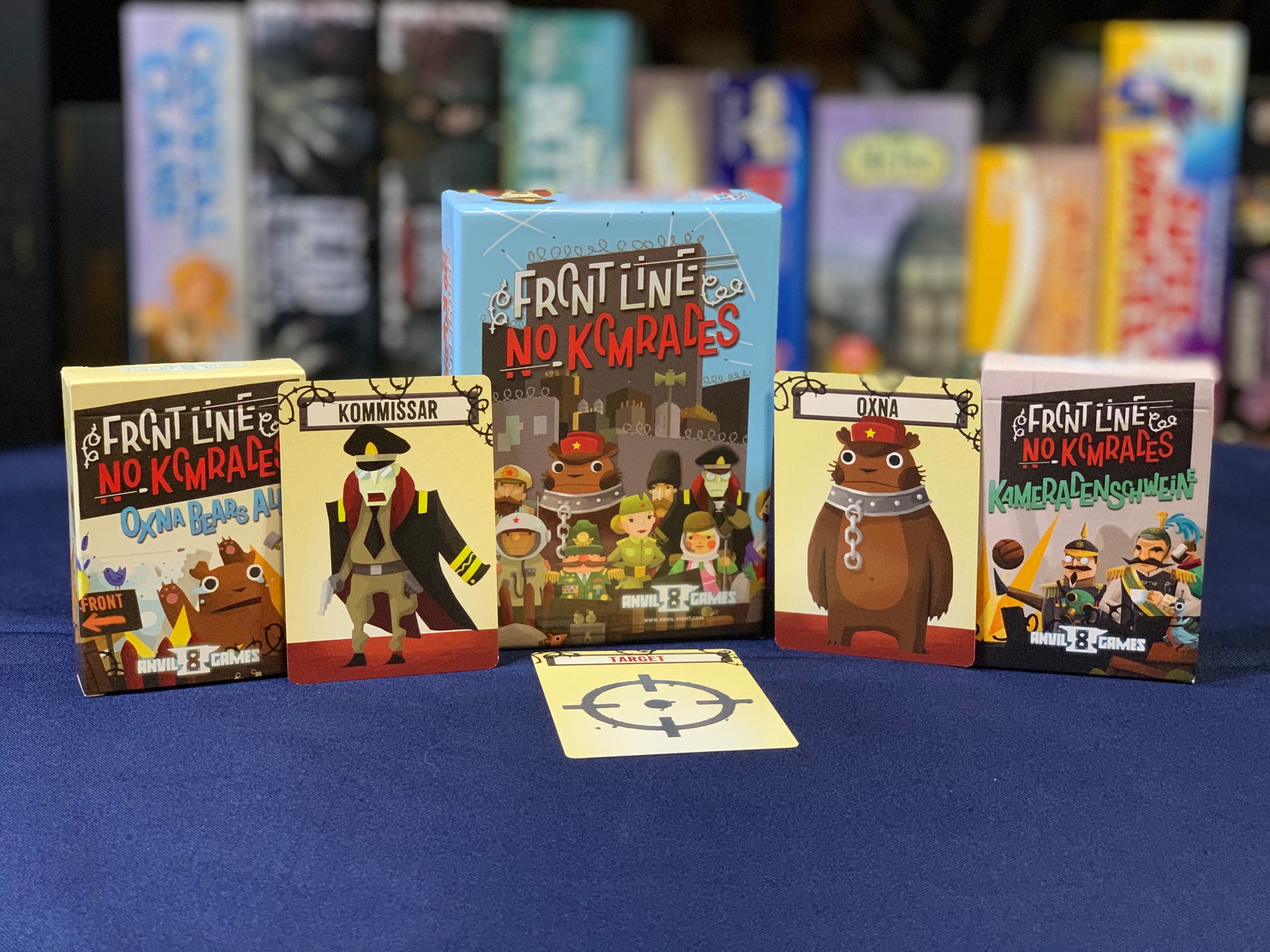
Links/Media
At PAX Unplugged 2019, I taught the game to a group of Youtube group called Hit Points Gaming. You can watch a bit of game play here and check out their other videos.
